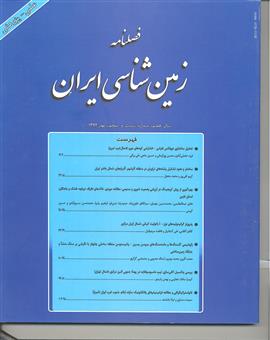مقایسه شبکههای عصبی MLP و RBF در تخمین پارامترهای آبخوانهای محبوس
محورهای موضوعی :
1 - دانشگاه شیراز
2 - دانشگاه شیراز
کلید واژه: پارامترهای آبخوان شبکه عصبی مصنوعی, آنالیز مولفهی اصل الگوریتم آموزش لونبرگ-مارکوآرت آزمون پمپاژ.,
چکیده مقاله :
در این مقاله، شبکههای عصبی مصنوعی پرسپترون چند لایه (MLP) و تابع پایه شعاعی (RBF) جهت تعیین پارامترهای آبخوان محبوس (قابلیت انتقال آبخوان و ضریب ذخیره) طراحی گردیده است. تابع چاه مربوط به آبخوانهای محبوس به این شبکهها آموزش داده شده است. با اعمال تکنیک آنالیز مولفه اصلی بر مجموعه دادههای آموزش، ساختار شبکه MLP و RBF به ترتیب با آرایش (1×12×1) و (1×14×1) صرف نظر از تعداد دادههای آزمون پمپاژ ثابت گردید. این شبکهها با دریافت هر مجموعه داده آزمون پمپاژ واقعی، مختصات نقطه انطباق بهینه را تولید میکند. سپس مختصات نقطه انطباق با حل تحلیلی تایس (1935) ترکیب شده و مقادیر پارامترهای آبخوان محاسبه میشود. توانایی تعمیم و عملکرد این شبکهها با 100000 مجموعه داده سنتز شده ارزیابی گردید و دقت آنها با استفاده از دادههای دو آزمون پمپاژ واقعی با روش انطباق منحنی تیپ مقایسه شده است. نتایج حاصل از مدلسازی تابع چاه در آبخوان محبوس نشان داد که اگر چه هر دو مدل شبکه عصبی MLP و RBF میتوانند پارامترهای آبخوان را با دقت بالایی تعیین نمایند و خطاهای گرافیکی حاصل از روشهای انطباق منحنی تیپ را حذف کنند اما شبکه MLP طراحیشده از دقت بالاتری نسبت به شبکه RBF برخوردار میباشد به همین دلیل شبکه MLP پیشنهادی به عنوان یک روش خودکار، دقیق و سریع جهت تعیین پارامترهای آبخوان محبوس توصیه میشود.
In this paper, Multi-Layer Perceptron (MLP) and Radial Basis Function (RBF) Artificial Neural Networks (ANNs) are designed for the determination of confined aquifer parameters: transmissibility and storage coefficient. The networks are trained for the well function of confined aquifers. By applying the principal component analysis (PCA) on the training data sets the topology of the MLP and RBF networks is reduced and fixed to [1×12×1] and [1×14×1], respectively regardless of number of records in the pumping test data. The networks generate the optimal match point coordinates for any individual real pumping test data set. The match point coordinates are then incorporated with Theis analytical solution (1935) and the aquifer parameter values are determined. The generalization ability and performance of the developed networks is evaluated with 100000 sets of synthetic data and their accuracy is compared with that of type curve matching technique by two sets of real pumping test data. The results showed that though both MLP and RBF networks are able to determine the confined aquifers parameters and eliminate graphical error inherent in the type curve matching technique but the MLP network is more accurate than the RBF network. Therefore, the proposed MLP network is recommended as an accurate automatic and fast procedure for the confined aquifer parameters estimation.
